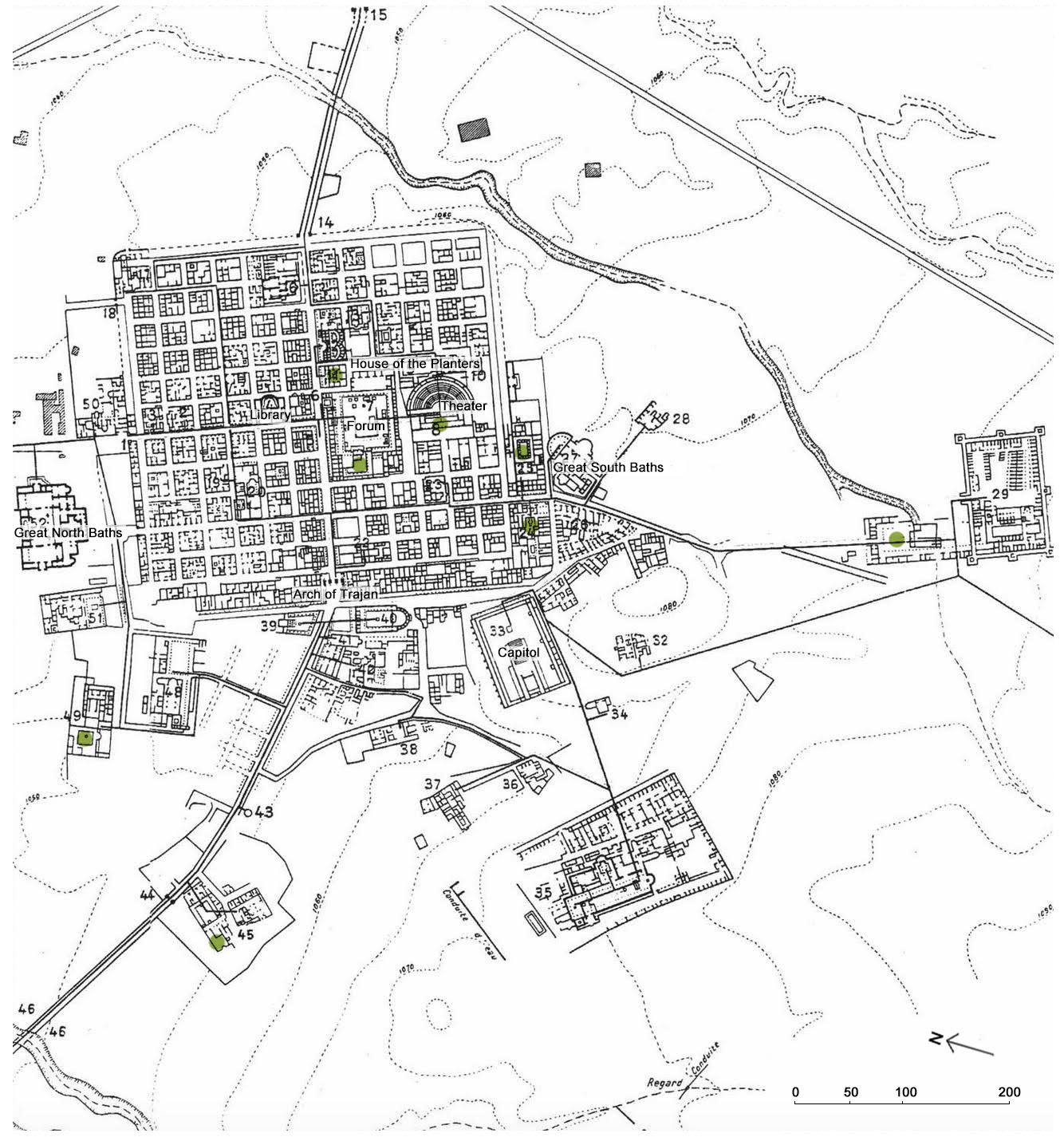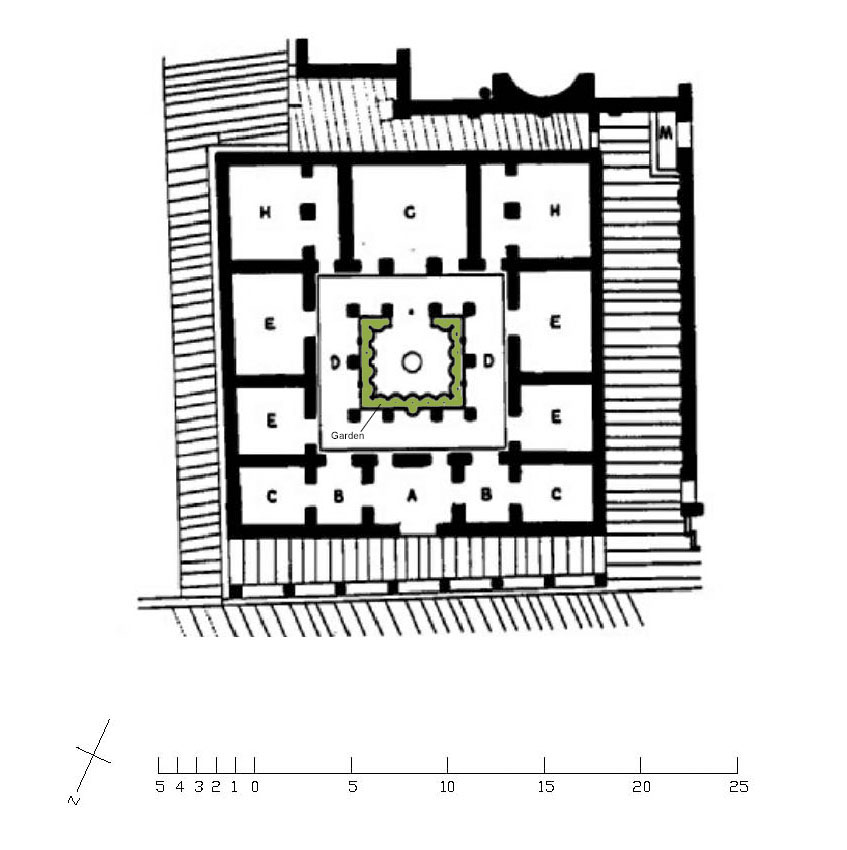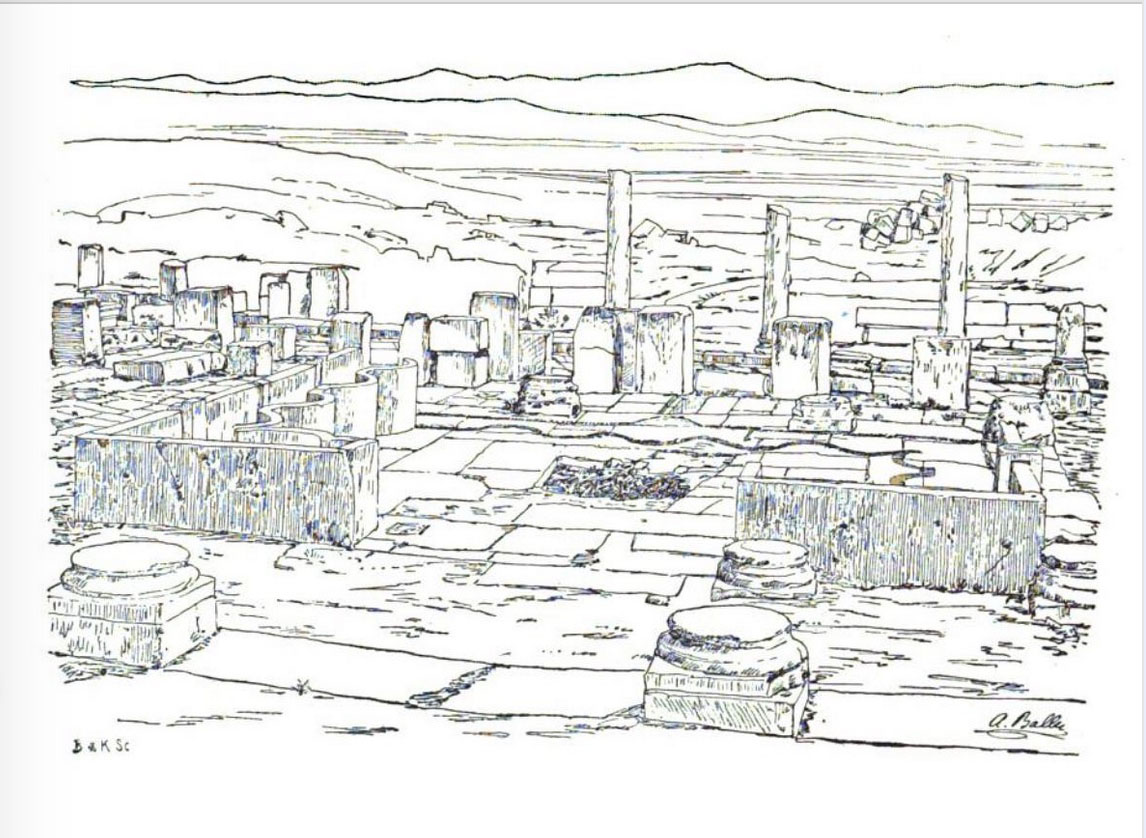House of the Planters (Maison aux jardinières)
Province
Province Description
The frontier between Numidia and Mauretania fluctuated during early the African kingdoms. It was fixed at the river of Ampsaga during Caesar’s reign when he rewarded his ally King Bocchus, giving him part of the Numidian kingdom. By 31 BCE, Numidia (also known as Africa Nova) was under direct Roman control, becoming attached to the province of Africa Proconsularis. Toward 194 CE, Septimus Severus detached most of the Numidia territory from the province of Africa Proconsularis, forming a special province governed from Cirta by a procurator, subordinate to the imperial legate. With the Diocletian reforms, the whole of Roman Africa (with exception of Mauretania Tingitana) constituted a single diocese subdivided into six provinces, including Numidia Cirtensis with Cirta as capital.
Location

Fig. 1: Plan of Thamugadi (Courtois, C., 1951)
Location Description
Thamugadi, now known as Timgad, was founded as a colony during by Emperor Trajan around 100 CE. The city had a checker-board plan, measuring approximately 11 hectares (27 acres) total, containing a forum with Curia, an imperial temple, and a basilica. Between the second and fourth centuries, the city expanded from its original layout. Additional temples and baths were built, and the center of the city was expanded with the construction of luxurious houses, a library, and a new market. At the end of the fourth century, bishop Optatus of Timgad, a prominent member of the Donatist church, constructed the great west basilica. During the Byzantine conquest, a fortress was erected on the water sanctuary; the original site dating to the third or fourth century.
Garden
House of the Planters (Maison aux jardinières)
Keywords
Garden Description
Located SW of the Decumanus and NE of the forum, the house of the "Jardinières" almost square shaped, was laid out around a peristyle of 10 columns. Along the three porticoes and the angles of the fourth were arranged planters (10,50 x10,50 m) whose contours are curved. Double herm-heads or two sided-plaque with masks were found, they may have surmounted the corner pilasters of the courtyard. In the middle was a well. Facing the entrance and opening towards the courtyard, a large reception room was surrounded on its two sides by a vestibule leading to a room. (Plan view Fig.1; Fig.2)
Maps
Plans

Fig. 1: Plan of the House of the Planters (Boeswillwald, E., Cagnat, R., Ballu, A., 1905, plan fig. 40)
Images

Fig. 2: Drawing of the courtyard of the House of the Planter (Ballu, A., 1897,fig. 36)
Dates
2nd-3rd century CE?
Bibliography
- Ballu, A., Les ruines de Timgad (Antique Thamugadi), Paris, 1897, pp. 224-226, plan fig. 36. S. (worldcat)
- Boeswillwald, E., Cagnat, R., Ballu, A., Timgad: une cité africaine sous l'Empire romain, Paris, Leroux, 1905, pp. 88-92, Plan fig.40.(worldcat)
- Courtois, C., Timgad, antique Thamugadi, Alger, 1951. (worldcat)
- Germain, S., Les mosaïques de Timgad, Paris, 1969, p. 37. (worldcat)
Pleiades ID
TGN ID
Contributor
Amina-Aïcha Malek (ORCID: 0000-0002-1628-615X)
Publication date
21 Apr 2021